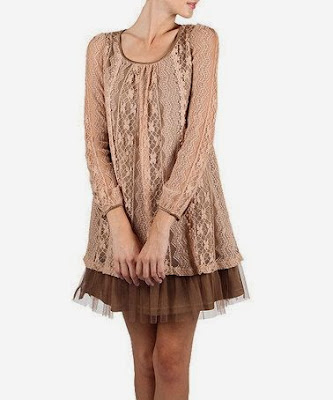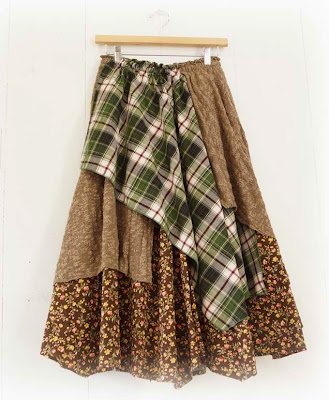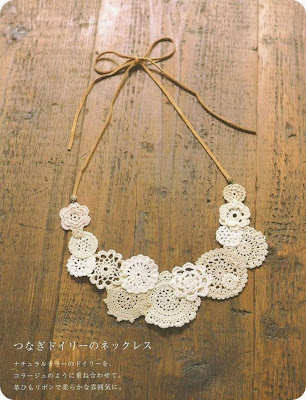When I first started to create my mori wardrobe, I was a bit lost as to where to start. I pretty much just bought anything I considered to be mori, and ended up with a large mess of clothing, and not a clue how to coordinate all of it. But after a few years of creating a mori wardrobe, I finally know what the basis for a mori wardrobe is. I want to share this with all of you, so that if you're just starting to create your mori wardrobe you can have some idea of where to start. Please remember that these are all my personal opinions, and that this is not by any means a complete guide. Just a bit of a guideline based on the things I've found while building my own mori wardrobe. To compare and contrast, you can check out Miss Kellie's wardrobe guide, and Berry Drop Shop's wardrobe guide for mori girls in tropical climates.
So without further ado, let's begin!
When beginning to make a mori wardrobe, the most important thing to do is to pick a general color scheme in addition to your regular whites and creams. For example, you can focus your wardrobe's colors on browns, pinks, greens, or any other kind of natural colors. Just stick with a few colors, and don't go grabbing all colors of the rainbow. I didn't do this when first starting out, and it made it very hard to create coords when I had one piece in every color, and none of them matched. The more similar colors you purchase, the more outfits you can make, and the easier it will be to make them. If you do really want multiple colors when first starting out, try to buy a few pieces of each color you choose at least.
Another thing I've found to be important is picking your length. What I mean by that is figuring out what length of dress or skirt looks best on you, and then trying to buy clothing that keeps with that length. For instance, I look and feel most comfortable when my layers are mid-calf, or just above the knee. I don't feel good in skirts that are ankle length and so I often pass up mori finds that are that length, because I know it would be hard for me to coord them.
Also, don't buy anything that isn't flattering on you just because it looks good on the hanger. I can't stress this one enough. I've wasted a lot of money buying pieces that were very cute, but didn't fit me at all. They'll just end up sitting in your closet, and eventually being donated to a thrift shop. So unless it fits as is, or you know for a fact that you can alter it to fit yourself, don't buy it.
So let's start with a list of some basics for your wardrobe. They're not listed in any order of importance, so you can choose which ones you think are most important to start with.
Base Dress
This, in my opinion, will be the main foundation for your Mori wardrobe. Your base dress should be simple, and in a neutral color or one of your primary colors. It doesn't necessarily have to be completely plain and boring, although the plainer it is the easier to work into multiple coords. If you prefer something not as plain, then look for something with small details such as a crocheted hem, cute pockets, or embroidered patterns on the dress front.
Plain Under Skirt
This is another main piece for your wardrobe. This piece will be used to give you the extra layers you're looking for in a mori outfit. However, just like your base dress this skirt doesn't necessarily need to be completely plain. Look for extra ruffles on the bottom of skirt, and little details like lacey bits and patches. Try to look for a length that will layer well with your base dress length. For colors, I would suggest sticking with creams, as this skirt will be used often.
Lace Underskirt/Dress
This piece will also be a staple in your mori wardrobe. It usually is used as the bottom layer, or the top, overlayer (if it's a dress). Any kind of lace, in any size is fine. Just make sure it doesn't look synthetic or fake. Also, watch for length on this piece as well. You'll want to make sure that it layers well with your base dress, and also possibly your plain underskirt.
Tunic Style Top
This piece is very versatile. It can be used by itself with a skirt, as another layer on top of a dress, or even pair it with a pair of mori-able pants. For your first piece, I'd recommend keeping it a neutral color and looking for lace and ruffle details as opposed to patterns. However, if you are looking to expand an already existing mori wardrobe, then either patterned or plain is fine.
Tights
Tights are an absolute necessity for a mori girl in cold climates. When deciding what kinds of tights to purchase, make sure you take into account the weather near you. If you live in a tropical climate, you may not want to purchase any tights. If you live somewhere colder, you may want to consider buying extra tights to double up on when it's especially cold. As for what kinds of tights, I would again suggest something neutral to start out, and maybe a few patterned or different colored tights for special occasions.
Sweater
A sweater is a common piece in mori coords, but again this piece should be decided by where you live, and what your climate is like. If you live in a place where it is often warmer, and still would like to wear a sweater, look for one that is very thin, or perhaps wear a lace jacket instead. If you do get a sweater, try to look for something neutral and baggy. Don't let it swallow you, but make sure it is loose enough to flow with your clothing.
Patterned or More Detailed Base Dress
This will be your 'fun' piece! For this dress, look for special designs and patterns. Florals, patches, extravagant lace details, extra ruffles, or anything like that. This piece will be the one that will take more effort to coordinate, but will be your bit of color and life in your wardrobe.
Vest
A lace vest is a good way to add the illusion of extra layers and a lacey feel, with minimal effort. Depending on where you live, and the weather there, will again influence what this piece looks like. If you live somewhere warmer, look for loose crochet vests, or light lace vests.
Shawl or Capelet
Shawls and capelets, like lace vests, give out an illusion. This time it's of more layers than you actually have. When picking your shawl or capelet, again keep your climate in mind. For colder climates, you can actually use a knitted shawl or capelet to keep warm instead of just having it for a fashion statement. But in warmer climates you may want to look for something more on the lines of a large, lightweight scarf that can double as a shawl, or a capelet made of light materials. Neutral colors, as always, will be easiest to coordinate, but you can also go for a shawl or capelet in your chosen colors.
Blouse
A blouse will most likely be used underneath other layers, so keep it simple and a fairly neutral color. The sleeves length will be determined by where you live, and how often you want to wear it. Look for a cute, or unique collar to give your blouse a bit of character.
Patterned Blouse
Another 'fun' piece! This blouse can be used underneath other layers, but can also be used by itself. Look for lots of details, and patterns. Details on the bottom of the blouse are especially cute, and add to the layering feel. Also keep collars in mind for this blouse as well.
Mori-able Pants
This piece isn't necessarily a staple for everyone, but some mori girls still want to wear, or need to wear, pants from time to time. When looking for mori-able pants look for something slightly baggier than usual. As a rule, try to stay away from skinny jeans as they give off more of a sexy, or mainstream, feel. If you want to stay tighter with your pants, look for a fabric other than your usual jean fabric, such as cotton or khakis. Natural colors, such as browns and greens, are also good for giving off a mori feel.
Patterned Skirt
This skirt is another 'fun' piece. You can wear this as a layering piece under your base dress, or you can wear it by itself with a blouse. Again, keep your length in mind, and look for a skirt with patterns, fun colors, and lacey details. If you can find a skirt with the illusion of more than one layer you can wear it by itself in hot weather and look like you are layering when you're really not.
Socks/Leg Warmers
Socks and legwarmers give a bit more detail to your outfits. Leg warmers can be in your chosen colors or neutral, depending on what you feel you would wear more. And socks can be as plain or as detailed as you prefer. For detailed socks, look for socks with lace on the top or perhaps floral, or patterned.
Shoes
The possibilities for shoes are almost endless, but I would suggest keeping them comfortable and practical. Boots, from ankle length to calf-length, are a good option. As well as oxfords, flats, or even lacey tennis shoes. Go for neutral colors, such as browns and whites, and natural looking materials. If your shoes have laces, you can always swap the laces out for lace to create a bit more detailed look. Try to go for round-toed shoes, as they look more natural.
Bloomers
Bloomers are a bit more hard to find than other mori pieces. Where it's quite possible to find something like a skirt or blouse at a thrift shop, it's most likely that you will have to buy bloomers from a mori clothing brand. Bloomers create a bit more layers, and give a whimsical feel to your outfit. Keep them white or cream, so that they can go with anything. Look for lace or ruffles at the bottom for details.
Brooch
Brooches aren't for everyone, but can be a fun accessory. When buying a brooch look for ones with a thin pin on the back. As brooches can often leave holes in fabrics, you want to make sure that your pin will leave the smallest holes possible. And if your pin is thin enough, and your fabric loose enough, you can avoid holes entirely. If you have any experience crafting, you might try making a brooch for yourself!
Scarf
Scarves are a great way to add detail, and can also be used to keep warm in colder climates. Try to find large scarves that can loop all the way around your neck. Infinity scarves can be good for this. Lace details are often a nice touch. You can also look for scarves with colors and patterns.
Necklace
When purchasing a necklace look for naturally themed jewelry, such as things with woodland creatures, and mushrooms or trees. Gold coloring for metals is usually preferred, but tarnished silver is fine as well. You can also look for jewelry with leather straps, lace, or twine, to make it seem even more natural.
Bag
A bag is important to have. Most people carry a bag with them everywhere, so you need to make sure your bag matches the theme of your outfit. You can go as simple as a leather or cloth bag, or you can go for a bag covered in lace, or a basket. Again, this depends on your personal preference.
A few other small things you might consider adding to your mori wardrobe are hair accessories, such as flower clips or lace hair bands, and a mori hat, preferably straw with lace details.
Hopefully this is helpful for you, and inspires you to start building your own mori wardrobe! If you have any other ideas, make sure to let me know. And have fun coordinating!
















































































